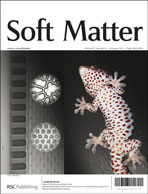The mechanical properties of amniotic membrane influence its effect as a biomaterial for ocular surface repair
Abstract
The human amniotic membrane (AM) is a tissue of fetal origin and has proven to be clinically useful as a biomaterial in the management of various ocular surface disorders including corneal stem cell transplantation. However, its success rate displays a degree of clinical unpredictability. We suggest that the measured variability in AM stiffness offers an explanation for the poor clinical reproducibility when it is used as a substrate for stem cell expansion and transplantation. Corneal epithelial stem cells were expanded upon AM samples possessing different mechanical stiffness. To investigate further the importance of biological substrate stiffness on cell phenotype we replaced AM with type I collagen gels of known stiffness. Substrate stiffness was measured using


 Please wait while we load your content...
Please wait while we load your content...